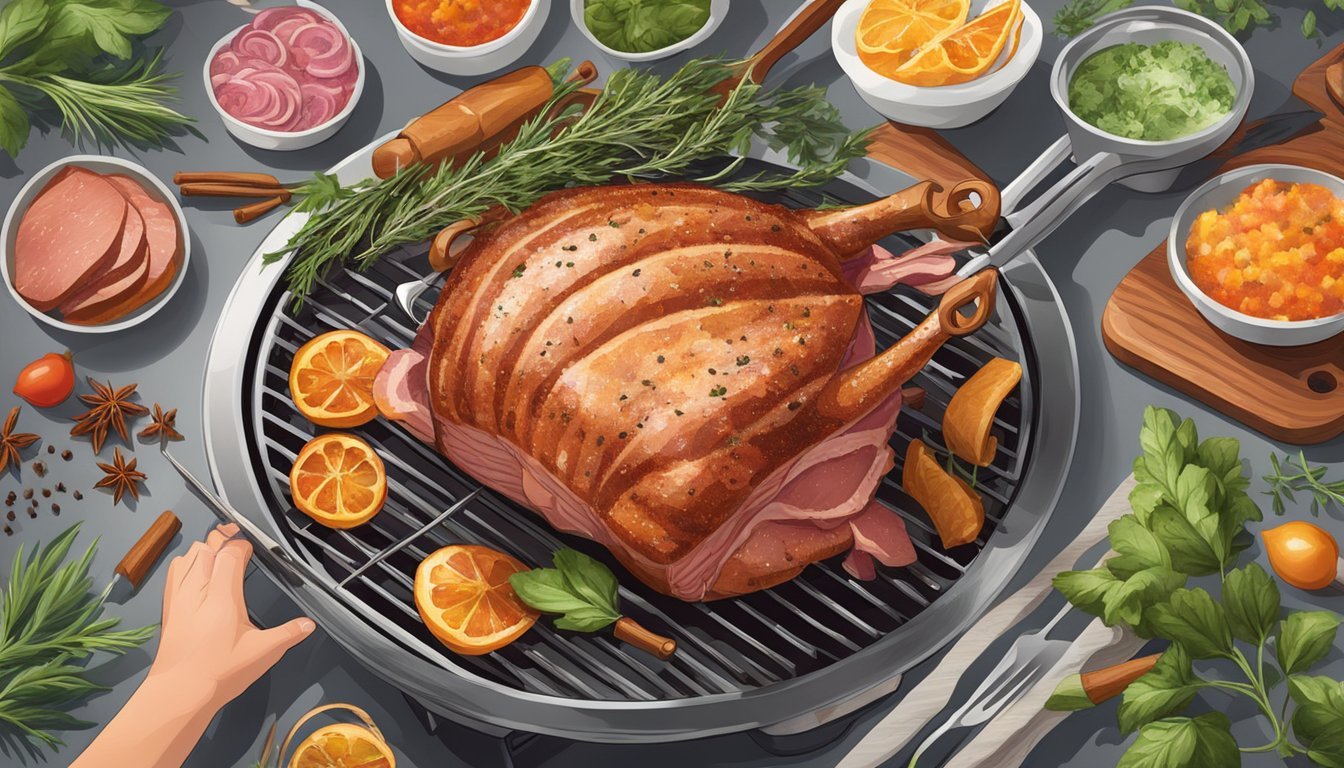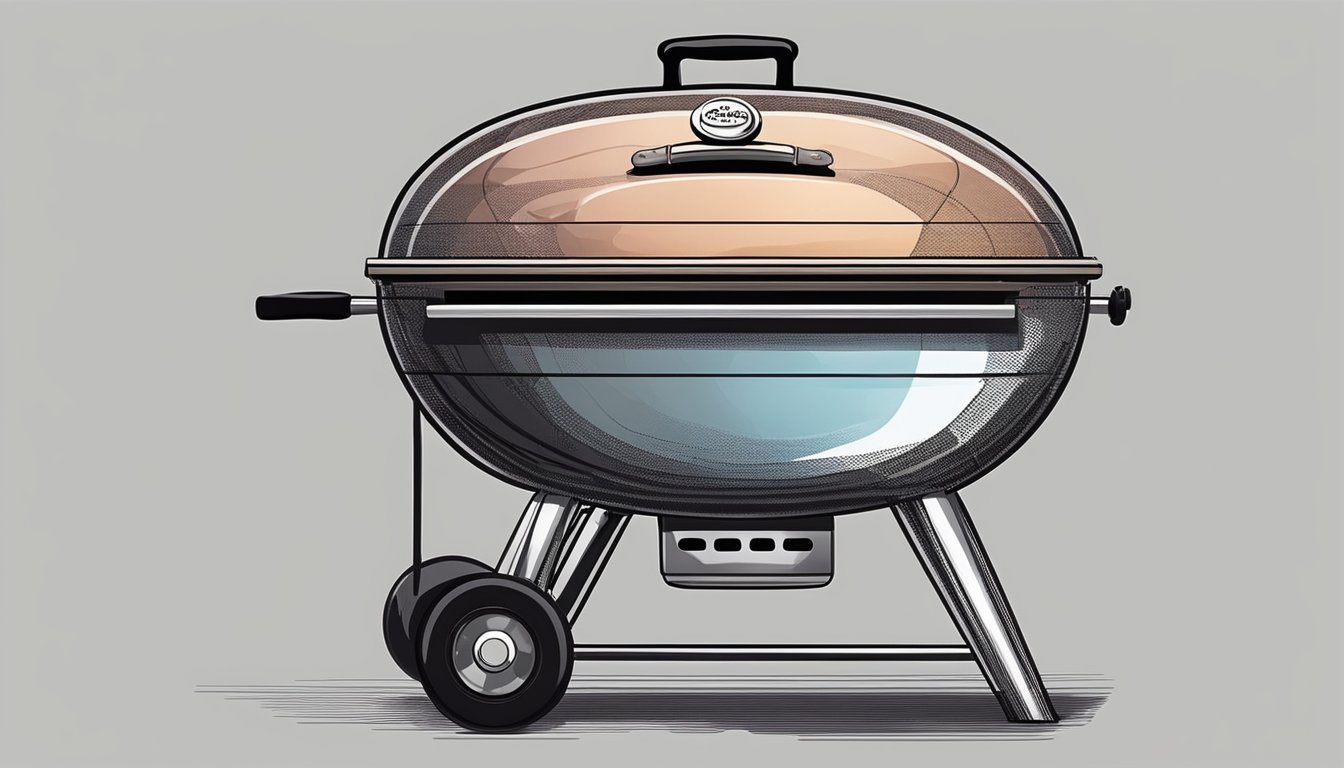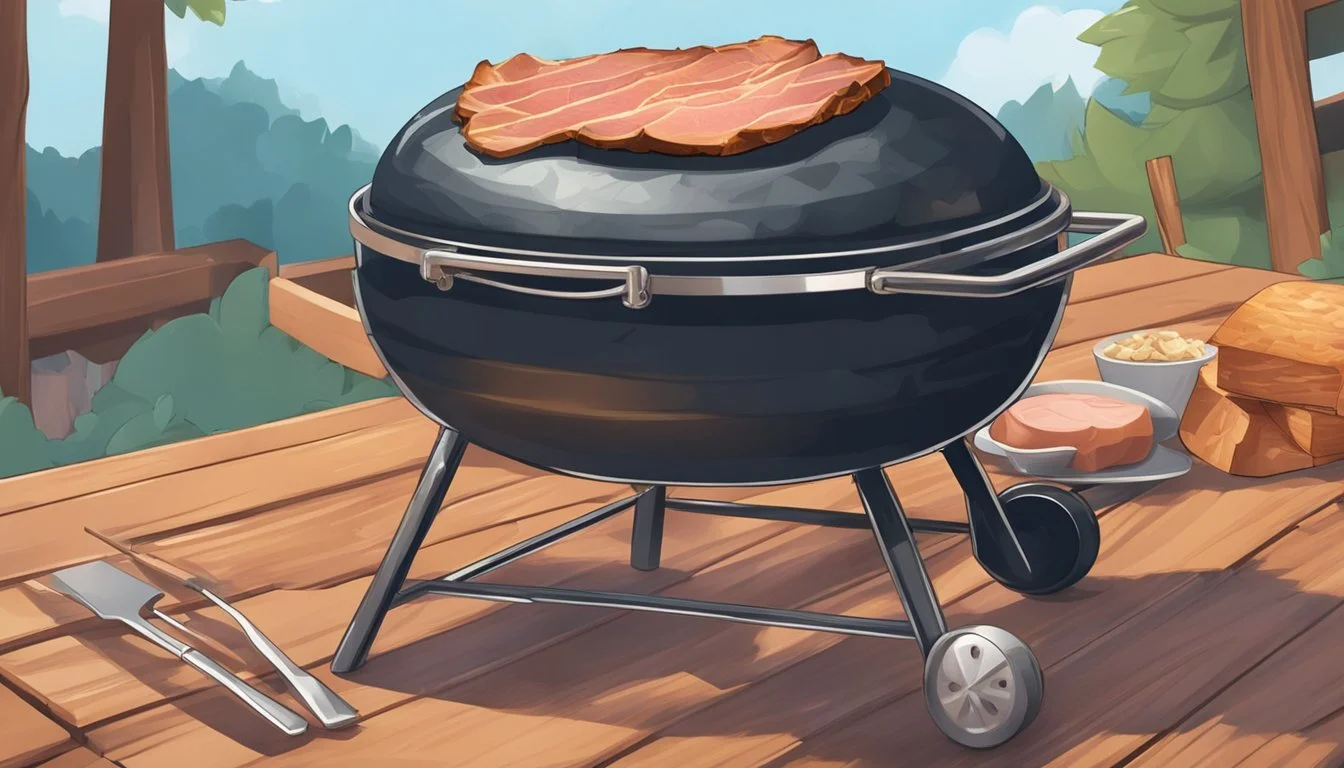Smoked Easter Ham
A BBQ Twist on a Classic Holiday Recipe
Easter ham has long stood as a centerpiece of springtime feasts, embodying the essence of holiday tradition. This classic dish, often oven-baked or glazed, has delighted families for generations with its savory taste and festive presence. However, a new twist on this venerable tradition has been gaining traction among culinary enthusiasts: the smoked Easter ham. Swapping the oven for the smoker infuses the meat with a rich, woody aroma that enhances the ham's natural flavors, offering a delectable fusion of time-honored tradition and contemporary barbecue technique.
Smoking a ham for Easter is both an art and a science, thus requiring a delicate balance of temperature control, timing, and preparation of the meat. While the conventional baked ham is typically marked by a sweet glaze, incorporating various ingredients such as brown sugar, honey, or mustard, the smoked Easter ham takes this one step further. The process begins with the careful selection of a quality ham and the application of a dry rub or mustard base, followed by a meticulous smoking technique that slowly cooks the meat to succulent perfection.
The BBQ twist on a classic Easter ham not only elevates the flavor profile but also adds a layer of complexity to the dining experience. As the ham gently absorbs the smoky notes from woods such as apple, hickory, or cherry, it melds these with the sweetness of traditional glazes, creating a harmonious blend that tickles the palate. This innovative approach to an Easter staple invites both seasoned pitmasters and novices alike to explore the subtleties of smoked meats while honoring the festive spirit of the holiday.
Selecting the Perfect Ham
Selecting the perfect ham is pivotal for a smoked Easter centerpiece. Factors such as pork quality and origin, the state of the ham before cooking (pre-cooked or fresh), and whether to choose bone-in or boneless, all influence the final taste and presentation.
Pork Quality and Origin
When looking for a ham, the quality of the pork and its origin are crucial. One should opt for high-quality, well-sourced pork as it significantly impacts flavor. Consider heritage breeds or hams certified by reputable farming practice standards ensuring ethical treatment and a cleaner diet, typically resulting in superior taste.
Pre-Cooked vs. Fresh Ham
The choice between a pre-cooked ham and a fresh ham depends on convenience and preference. Pre-cooked, or spiral hams, are already cured and sometimes smoked, needing only to be heated through and glazed. Fresh hams, on the other hand, offer a more hands-on experience, allowing for a deeper infusion of the smoker's flavor but require a longer prep and cooking time.
Bone-In vs. Boneless
Deciding between a bone-in or boneless ham is often a matter of preference. Bone-in hams tend to have more flavor and a classic presentation, essential for an Easter centerpiece. However, boneless hams provide convenience in slicing but may lack some of the richness in taste imparted by cooking with the bone.
By carefully considering these aspects, one ensures the smoked Easter ham will be both flavorful and fitting for the occasion.
Preparing Your Ham
The preparation of an Easter ham with a BBQ twist begins with careful trimming, choosing a flavorful rub, and applying a good quality mustard to create a base for the spices to adhere to.
Trimming and Scoring
The chef starts by trimming excess fat, leaving about a 1/4 inch layer to help retain moisture and flavor. Scoring the ham is next, creating a diamond pattern about 1/4 inch deep on the surface. This action not only enhances the aesthetic appeal but also allows the flavors to penetrate more deeply.
Choosing the Right Rub
Selecting the right rub is critical for infusing the ham with BBQ flavors. A balanced mix often contains brown sugar for sweetness and various spices for depth. Here is a basic rub recipe to consider:
2 tablespoons brown sugar
1 tablespoon paprika
1 teaspoon garlic powder
1 teaspoon onion powder
1 teaspoon salt
1/2 teaspoon black pepper
Applying Mustard and Rub
The application of mustard precedes the rub. The chef should coat the outside of the ham evenly with Dijon mustard, providing a tacky surface for the rub. After the mustard application, they pat the prepared rub mixture onto the ham, ensuring an even coating that adheres well to the mustard layer. The combination of Dijon mustard and the rub creates a flavor-packed crust during the smoking process.
Setting Up the Smoker
When preparing a smoked Easter Ham, one must give thoughtful consideration to the type of wood used and the control of the smoker's temperature. The success of the smoking process largely hinges on these two elements.
Selecting Your Wood
For a traditional smoked ham, hickory wood is often the preferred choice due to its strong, savory smoke flavor that complements the natural sweetness of the ham. However, the selection isn't limited to just hickory; one may also consider apple or cherry wood for a lighter, fruitier taste. The wood should be dry and free of any mold or rot to ensure clean smoke.
Temperature Control
Maintaining a consistent temperature within the smoker is crucial for the "low and slow" cooking method characteristic of barbecue. The ideal temperature range for smoking a ham is typically between 225°F and 275°F. A steady temperature allows the smoke to penetrate the meat without drying it out. Frequent monitoring may be necessary to ensure that the temperature remains stable throughout the cooking process.
The Smoking Process
When smoking a ham, there are critical phases in the process that contribute to its smoky flavor and tenderness. The right techniques and temperatures are pivotal for achieving a well-smoked ham.
Initial Smoking Phase
To start, one should preheat the smoker to a stable temperature. A typical range is between 225 and 275 degrees Fahrenheit depending on the desired intensity of the smoky flavor. The ham, often pre-cooked or 'city ham', must be placed cut side down directly on the grill grates. It is smoked undisturbed in this initial phase to slowly take on the wood smoke, a process that imbues the outer layers with a distinctive smoky flavor.
Wrapping the Ham
Once the internal temperature of the ham reaches approximately 100 degrees Fahrenheit, measured with a meat thermometer, the next step is to wrap the ham. This is particularly important for a double-smoked or twice-smoked ham, where the wrapping with aluminum foil can help to retain moisture and prepare the ham for the glazing phase. Some prefer to add a braising liquid like apple juice or chicken stock before tightly sealing the ham with the foil to enhance moisture.
The Final Smoking Phase
After wrapping, the ham is returned to the smoker to continue cooking. This final smoking phase allows the internal temperature to rise to a target of 140 degrees Fahrenheit, ensuring it's heated through. During this stage, glazing mixtures often composed of brown sugar, honey, and spices are applied to create a sticky, caramelized exterior. The glaze should be brushed on periodically, allowing it to build up in layers, especially within any scoring marks to maximize flavor penetration. The resulting product should offer a balance of sweet and savory notes complemented by a deep smoky essence.
Creating the Glaze
The glaze for a Smoked Easter Ham transforms the dish with its sticky, sweet, and tangy flavor profile. It’s the harmony of ingredients and the careful cooking process that establish its unique taste and texture.
Combining Sweet and Tangy Ingredients
When crafting a glaze for Easter Ham, sweet and tangy components create a balance that elevates the overall flavor. Honey, with its natural sweetness, pairs excellently with brown sugar, offering depth and a caramel-like consistency. Pineapple juice introduces a fruity tang, while bourbon can add a smoky complexity. For a touch of acidity, a dash of vinegar helps to cut through the richness.
Ingredients to combine:
Honey
Brown Sugar
Vinegar
Pineapple Juice
Boiling to Perfection
To achieve the right consistency, the glaze must be boiled carefully. It should be stirred continuously to meld the flavors and prevent burning. Once boiled, the mixture thickens into a syrupy texture perfect for adhering to the ham. The goal is a glaze that can be applied smoothly and that will create a glossy finish as it caramelizes during the smoking process.
Glazing and Garnishing
A carefully applied glaze can elevate the flavor of double-smoked ham, creating a delectable balance of sweetness to the rich, smoky meat. Once glazed, simple garnishes can enhance the presentation and add contrasting or complementary flavors.
Applying the Glaze
One should apply the glaze during the latter stages of smoking to prevent burning and to ensure it adheres properly. A typical glaze for Easter ham often involves a blend of brown sugar, honey, and apple cider brushed onto the ham to achieve a glossy and sticky exterior. The glaze should be heated until smooth and brought to a "glaze" consistency before brushing it onto the meat, paying close attention to working it into any scored patterns to maximize flavor absorption.
Adding the Final Touches
After the ham has received its glaze and finished smoking, one can apply garnishes. Options include:
Pineapple rings or citrus slices: These can be arranged on and around the ham, adding a visual appeal and a fruity counterpoint to the smoky flavor.
Cherries (how long do cherries last?): Often paired with pineapple for a classic look.
Fresh herbs: Such as rosemary or thyme, subtly infuse the meat if laid on top during the final minutes of smoking.
Butter pats: Melted over the ham just before serving, it will add a rich, silky finish, enhancing both the meat's moisture and flavor.
Remember, the garnishes should complement the flavors in the glaze and not overwhelm the already rich taste of the double-smoked ham.
Serving and Presentation
When serving a smoked Easter ham, presentation is as much about visual appeal as it is about taste. A beautifully presented ham can become the centerpiece of Easter dinner, complemented by well-chosen side dishes and thoughtful plate decoration.
Carving the Ham
Carving the ham properly showcases its moist and juicy interior while making it easy for guests to serve themselves. Start by placing the ham on a large cutting board. It should be securely rested so it doesn't slip. With a sharp carving knife, slice along the bone, then make thin slices perpendicular to the bone to create even portions.
Choosing Side Dishes
Side dishes should complement the rich smokiness of the ham without overpowering it. Traditional Easter sides include:
Mac and Cheese: Creamy and comforting, this dish brings a delightful richness that pairs well with the smoky meat.
Cornbread: Its slight sweetness balances the ham's savory notes.
Vegetables: Roasted or steamed, they add a light and fresh component to the meal.
Plate Decoration
Plate decoration elevates the overall presentation. Consider garnishing with:
Parsley sprigs for a touch of green.
Slices of orange: They introduce a citrusy aroma and a pop of color.
Cherry tomatoes: A few halved cherry tomatoes can add a juicy, fresh element to the way the dish looks.
Employing these serving and presentation tips ensures that the smoked Easter ham remains the star of the dinner while being complemented by a well-rounded array of side dishes and decorative touches.
Tips for Leftovers
After savoring a BBQ Smoked Ham for Easter or Christmas, leftovers can extend the enjoyment. Here are some confident and effective ways to repurpose that smoky deliciousness.
Ham and Cheese Omelette: A diner-style omelette with fluffy curds is the perfect canvas for diced smoked ham. Pair it with sharp cheese to complement the rich, smoky flavor.
Potato and Ham Hash: Combine crispy diced potatoes with savory ham pieces, adding vegetables like leeks and red peppers for a colorful and hearty breakfast hash.
Soup's On! Simmer a ham bone with beans, lentils or vegetables for a comforting soup. The smoked ham gives a deep, hearty flavor to the broth.
Ham-Infused Pizza: Elevate homemade pizza with bits of smoked ham, pineapple, and BBQ sauce for a Hawaiian twist. The sweetness of the pineapple pairs well with the smokiness of the ham.
Croissant Surprise: Insert slices of ham into a croissant with Swiss and Gruyère cheese, then bake until gooey and golden. A warm and inviting breakfast option.
Here's a quick cheat sheet for leftover ideas:
Meal Type Suggestion Breakfast Ham and Cheese Omelette Brunch Potato and Ham Hash Lunch/Dinner Ham-Infused BBQ Pizza Anytime Smoked Ham Croissant with Cheese
By creatively using leftovers, cooks can minimize waste and maximize flavor. Each repurposed meal should still respect the original's BBQ essence, making use of that distinct smokiness.
Safety and Storage
When preparing and storing a Smoked Easter Ham, one's primary concerns should revolve around food safety and maintaining the quality of leftovers. The following guidelines will ensure that the ham is both safe to consume and delicious for days to come.
Proper Cooling
A Smoked Easter Ham must be allowed to cool to a safe temperature before storage. The ham should be cooled within two hours of cooking to prevent bacterial growth. It is important to:
Allow the ham to reach room temperature naturally.
Never seal the ham in a container while it's still warm as this can create a breeding ground for bacteria.
Storage Techniques
Once cooled, the Smoked Easter Ham should be stored properly to preserve freshness and prevent foodborne illness. Here are specific steps for optimal storage:
Refrigerate the ham at 40°F (4°C) or colder.
Wrap it tightly in foil, plastic wrap, or store it in an airtight container.
Use a refrigerator thermometer to ensure the appliance is at the correct temperature.
Reheating Leftovers
Reheating leftovers should be done with care to maintain the ham's quality while ensuring it is safe to eat. Follow these pointers:
Reheat the ham to an internal temperature of 165°F (74°C) as measured with a food thermometer.
Slice only what you need and keep the rest stored away to minimize temperature fluctuations.
Consider reheating methods that will retain the ham's moisture, like using the oven or adding a splash of water before covering and reheating in a microwave.







